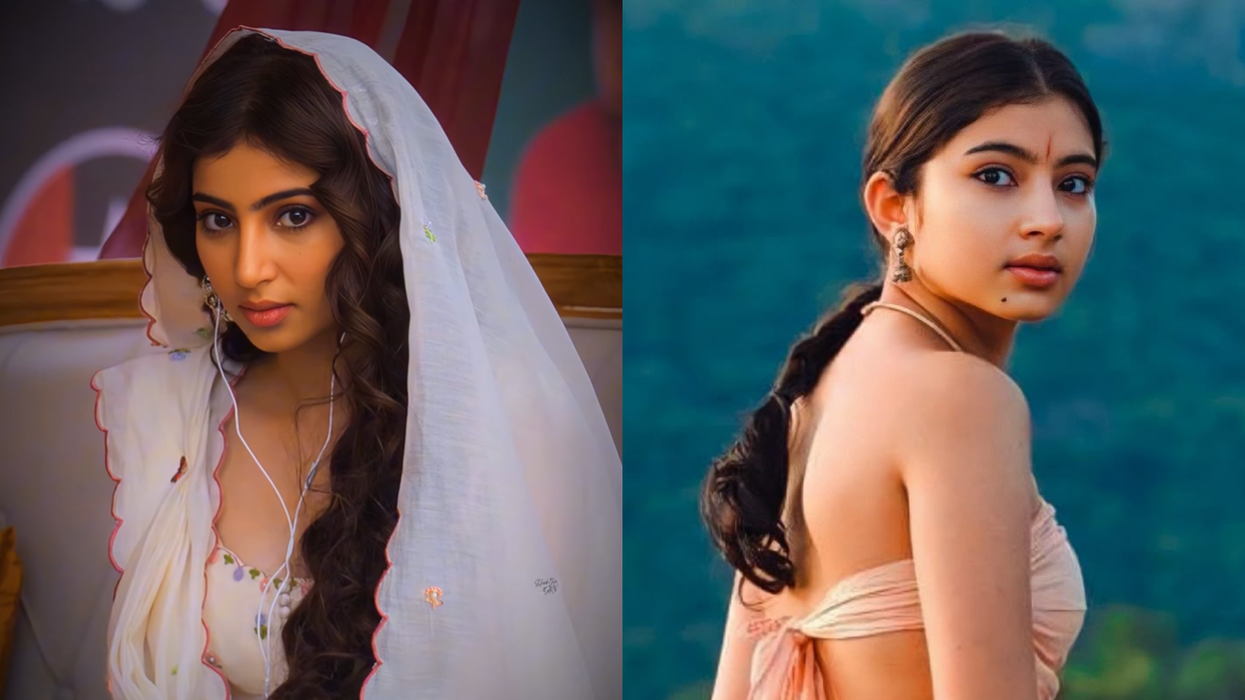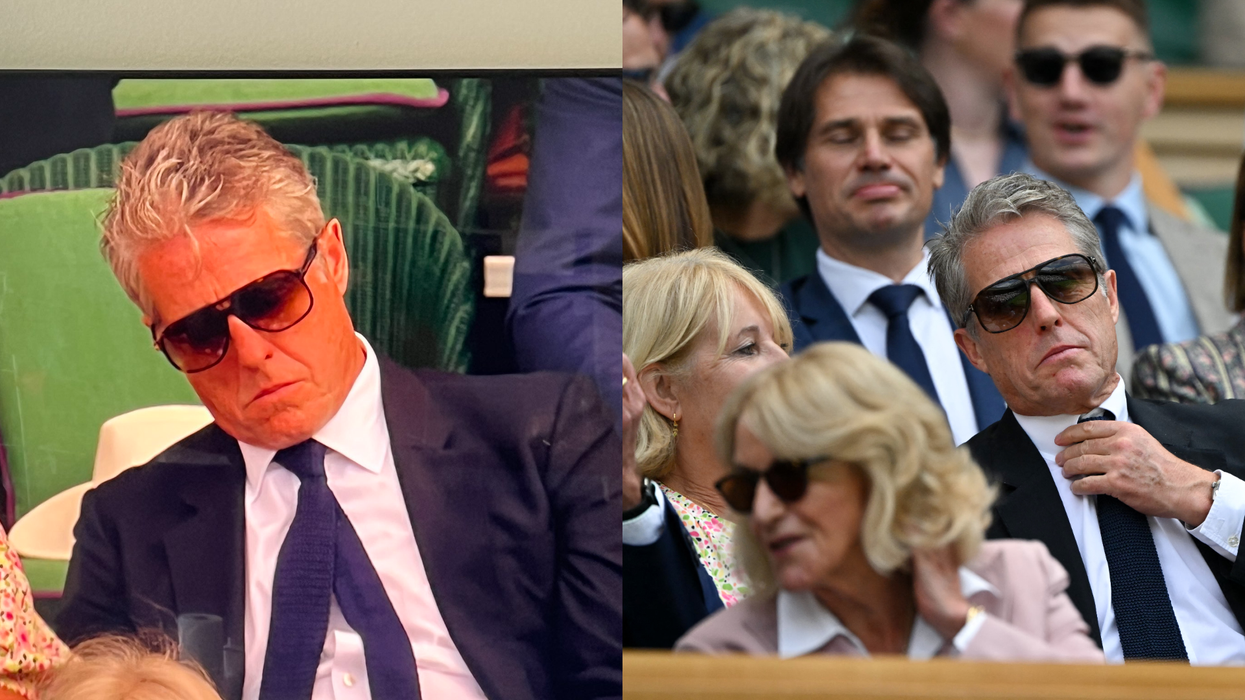IN A STRIKING moment at the 2025 Grammy Awards in Los Angeles, Anoushka Shankar commanded attention in a custom-made, sari-inspired, yellow Dior gown, marking her remarkable tenth and eleventh Grammy nominations.
For the British American sitarist of Indian origin, this appearance carried special significance – she returned not only as a nominee but as a presenter at the prestigious ceremony's 67th edition, which raised funds for those affected by the Los Angeles wildfires.
This wasn't her first time breaking ground at the Grammys. In 2016, she made history as the first musician of Indian origin to present at the awards, while simultaneously earning her fifth nomination for her classical album Home.
Reflecting on the nine-year gap between these presenting roles, Shankar noted the profound changes in both her life and the world at large. "Although so much has changed over the last nine years, I find myself once again in the world position of representing India on the global stage," she shared on social media.
At 43, Shankar's dual nominations at the 2025 ceremony reflect her extraordinary musical evolution. Chapter II: How Dark Is Before Dawn, nominated for Best New Age, Ambient or Chant Album, marks a bold departure from her traditional repertoire.
Created alongside British producer Peter Raeburn, the album ventures into ambient and neoclassical territories through minimalist sitar arrangements, forming part of an ambitious trilogy that showcases her artistic versatility.
Her second nomination came for A Rock Somewhere, a collaboration with British multi-instrumentalist Jacob Collier and Grammy-nominated vocalist Varijashree Venugopal, recognised in the Best Global Music Performance category.
The track exemplifies Shankar's passion for collaborative innovation. "I love the surprises that come from another human being," she has said, explaining how collaboration elevates her music beyond solo creation.
Her approach to music has evolved significantly since her teenage years, with she now speaking of having greater ownership over her artistic direction. While awards aren't the true indicators of her work's value, she acknowledges that recognition feels meaningful.
“Having ‘lost’ 9 times before, I’ve done enough work around that to know it doesn’t mean anything. Of course I’d be happy to win- I’m human!- but it doesn’t add value or significance to my art, or to who I am as a person,” she wrote a day before the Grammys.
“These words can seem trite or obvious but it’s hard to let them actually sink in and feel true, which is why I’m saying them in case it’s helpful to anyone else.”
Born in London, Shankar's musical journey began at age eight under her father's disciple, Gaurav Mazumdar. By ten, she was accompanying her father, legendary sitarist Ravi Shankar, on the tanpura during his performances. Her solo debut came at thirteen, performing at New Delhi's Siri Fort alongside tabla maestro Zakir Hussain during her father's 75th birthday celebration – a moment that foreshadowed her remarkable career.
Her teenage years in Encinitas, California, saw her balancing rigorous musical training with studies at San Dieguito High School Academy. At fifteen, she collaborated with her father and George Harrison on the landmark album Chants of India, handling notation and conducting responsibilities. This early studio exposure led to her first recording contract with Angel/EMI at sixteen.
While deeply rooted in classical Indian music, she has ventured fearlessly into electronica, flamenco, and contemporary classical realms. Her collaborations span an impressive range, from Herbie Hancock and Sting to her half-sister Norah Jones.
Her versatility extends to film scoring, composing for Joe Wright's Anna Karenina and Mira Nair's A Suitable Boy, while also penning a heartfelt biography of her father titled Bapi: The Love of My Life.
As a cultural ambassador, she has achieved unprecedented milestones, becoming the youngest and first woman to receive a British House of Commons Shield. Her performances with classical orchestras, including the London Symphony Orchestra and New York Philharmonic, have introduced Indian classical music to new audiences worldwide.
In an industry rapidly embracing technological innovation, Shankar maintains a thoughtful perspective on artificial intelligence in music. "I don't like passing judgement on trends or styles overall, but if anything in music, it's AI that worries me a little bit," she told ELLE magazine.
"I think it can be used by people in really interesting ways, but the way it's being used by streaming giants instead, I can't stand it and I'm not a fan."
Her stance reflects a broader concern among artists about maintaining authentic human connection in an increasingly automated musical landscape.
Shankar's activism complements her artistic work, as she advocates for various causes, particularly supporting women's rights and refugees. She has also lent her voice to documentaries addressing social issues, including narrating a film about human trafficking in India and Nepal.
A mother of two sons, she divides her time between London and India, maintaining strong connections to both her British and Indian heritage.
Even as she celebrates her Grammy nominations, Shankar continues to push forward. She recently released 'Hiraeth' and 'We Burn So Brightly', the first two singles from her forthcoming album Chapter III: We Return to Light, the third part of a trilogy she has been releasing over the last two years.
“This third chapter was really influenced by Goa and by India, while the previous chapters were more Europe and California influenced,” she has said. “These are all my three homes, and I just wanted to kind of dig into what these different aspects of my personality and my worldview are.”
Her upcoming tour will take her across the US and Canada in March and later in the UK and Europe before culminating in India with December performances, further cementing her role as a global artist who successfully bridges traditional and contemporary influences.













